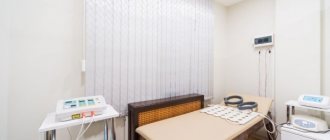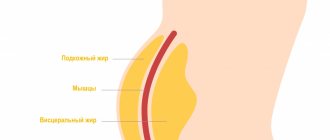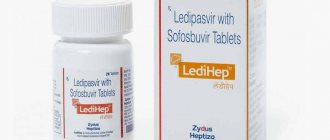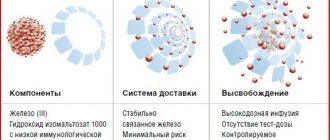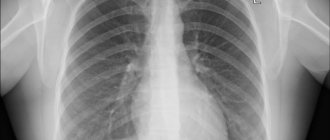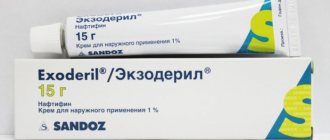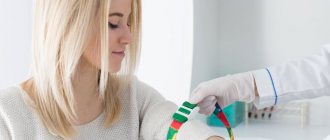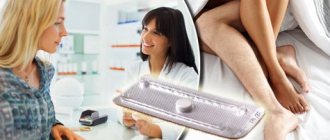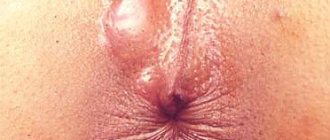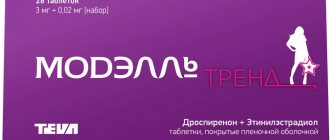Electrophoresis is a multifunctional treatment method that allows:
- fight swelling;
- stop inflammatory processes;
- reduce pain;
- relax muscles with increased tone;
- stimulate regeneration processes in tissues;
- stimulate the immune system;
- improve microcirculation;
- normalize the functioning of the central nervous system;
- stimulate the processes of synthesis of hormones, vitamins, microelements.
Using electrophoresis, the medication enters the patient's body with negatively and positively charged ions through the sebaceous and sweat glands, and the intercellular space. The dose of the incoming medication is equal to 2-10% of the total volume of the drug, which is impregnated with a special pad.
The therapeutic effect usually occurs within a day, since the main part of the drugs enters the systemic bloodstream from the subcutaneous fatty tissue and skin, where the drug is initially retained. This feature ensures a prolonged effect. As a result, metabolic processes are stimulated, anti-edematous and analgesic effects are enhanced, and innervation is normalized.
Novocaine electrophoresis
Indications
- spondylosis with moderate pain syndrome;
- arthrosis in the stage of moderate exacerbation.
Mode of application
The procedure is similar to galvanization. Novocaine has an analgesic and anesthetic effect on problem areas of the body. The amount of the drug, as well as the size of the electrodes, depends on the severity of joint damage.
Peculiarities
The anode (positive electrode) should be placed in the area of maximum pain. A medicated 3-4-layer gauze or filter paper moistened with a 0.5% novocaine solution (2-10 ml) should be applied to the body. For the ankle – 2-4 ml, for the hip joint – 8-10 ml.
Duration of treatment
The procedure lasts 15-30 minutes, daily, for 10-20 days, depending on the dynamics of pain syndromes.
When is electrophoresis used in children:
Medicinal electrophoresis is widely used in pediatrics, as it allows one to avoid injections that frighten children, and allows one to reduce the concentrations and doses of drugs, reducing their side effects and preventing allergic reactions. The medicinal effect is “targeted”, because the drug is injected into the skin exactly in the affected area. At the same time, a so-called “depot” of the drug is created in the skin, which makes the effect more long-lasting. Electrophoresis is used in all medical fields, from surgery (for example, cleaning infected wounds with electrophoresis with enzymes), to cosmetology, dermatology and dentistry. In children, it is actively used in the treatment of neurological diseases, in the treatment of bone fractures, and in bronchopulmonary diseases.
Electrophoresis of analgin, sodium salicylate, baralgin
The drugs have not only anti-inflammatory, but also a pronounced analgesic effect.
Indications
- arthrosis;
- spondylosis;
- in case of acute inflammation in the acute stage with severe pain.
Mode of application
The procedure is similar to galvanization: electrodes with a drug solution on a medicinal pad are installed on painful areas.
Peculiarities
A negatively charged electrode with a medicinal pad is placed on the painful area with the highest pain severity. Electrophoresis solution:
- diluted 1/10 50% ampoule solution of analgin;
- 5% sodium salicylate solution;
- 2% baralgin solution.
The amount of solution per napkin is 2-15 ml.
Duration of treatment
Daily procedures are carried out for 10-20 days for 15-30 minutes.
Contraindications to the use of electrophoresis
Like any other method of physiotherapy or drug, electrophoresis has its own contraindications that you need to be aware of:
- presence of a pacemaker;
- heart failure;
- tumors;
- heat;
- various inflammations at the acute stage;
- poor blood clotting (pathology, menstruation is a natural process and is not a limitation);
- severe form of bronchial asthma;
- skin diseases such as dermatitis;
- cuts, wounds or other damage in the area where the electrodes are applied;
- allergy to medication and intolerance to electrical procedures.
Side effects are rare, but they do exist. This may include redness, itching, or swelling at the electrode site if you are allergic to a medication or have a reaction to electrical current. At the 2-3 session, there may be an increase in temperature and pain due to inflammatory diseases, but after the end of the course they disappear on their own.
Bipolar electrophoresis of analgin and novocaine
Indications
The phase of exacerbation of arthrosis and spondylosis with persistent, severe pain and local inflammation.
Method of application and features
Analgin moistened in an ampoule solution (50%) (ratio 1/10, quantity – 2-15 ml) is placed between the electrode (–) and the problem area. A medicinal pad with a 0.5% solution of novocaine hydrochloride (2-10 ml) is placed under the electrode (+)
Treatment duration is from 15 to 30 minutes every day, from 10 to 20 sessions.
CHILD'S REGIME AFTER THE PROCEDURE
After the procedures, it is necessary to allow the child to rest for 20–30 minutes in the rest room. If you have to go outside in cold weather, then the rest should be longer. After electrophoresis, it is not recommended to warm the area of exposure so as not to change the concentration of the drug deposited in the skin. If the skin becomes dry after the procedure (this is possible due to exposure to acidic or alkaline electrolysis products and changes in the reactivity of the sebaceous and sweat glands), it can be treated with a moisturizing lotion a few hours after the procedure.
Sulfur electrophoresis
Purpose of application:
Preservation of the structure and integrity of articular cartilage
Indications
Arthrosis and spondylosis of a progressive course beyond the acute stage.
Mode of application
The technique is similar to galvanization: electrodes are placed transversely in the projection of the affected joint.
Peculiarities
A napkin soaked in a 10-30% solution in an amount of 2-8 ml is placed between the cathode and the body.
Duration of treatment
10-20 procedures performed every day for 15-30 minutes
Lithium or zinc electrophoresis
These microelements are needed for the normal functioning of ligaments, tendons, joint capsules and capsules, and connective tissue.
Indications
Progressive course outside the period of exacerbation of arthrosis and spondylosis.
Features of the method
A napkin moistened with a 2% zinc sulfate solution or a 3-5% lithium chloride solution is placed between the anode electrode and the patient’s body. The amount of liquid is 2-5 ml.
Duration of treatment
- daily;
- the session lasts 15-30 minutes;
- course of treatment of diseases - 10-20 procedures.
Iodine electrophoresis
The procedure has a good absorption effect due to the microelement used (iodine).
Indications
- progressive arthrosis and spondylosis beyond the acute stage;
- pronounced bone and fibrous changes;
- enlargement of the joint area.
Mode of application
It is performed by galvanization by placing a cathode electrode with a negative charge on the patient’s body with a medicinal pad soaked in a 2% solution of potassium iodide (2-8 ml), depending on the degree of joint damage.
Duration of treatment
15-30 minute procedures are carried out over 10-20 days.
Benefits of home treatment
The Group's children's medical centers provide the opportunity to receive qualified medical care at home, providing the highest level of diagnosis, treatment, support and rehabilitation for our young patients and support for their families using all the available resources of our clinics:
- House calls of doctors of all specialties.
- Medical procedures and testing at home.
- Travel to any area of the city and region without restrictions.
- No insurance, registration or citizenship is required to receive medical care.
- Providing assistance to children of any age: infants up to 1 year old, infants aged 1-3 years, preschoolers 3-7 years old and school-age children 7-18 years old.
- 26 years of experience in responsible treatment of children in St. Petersburg.
- 6 own children's medical centers with 650 specialists in 49 specialties.
- Possibility of diagnostics and continuation of treatment in our clinics.
- Coordination with other doctors: quickly obtaining advice and assistance from specialist doctors. We are a team, not individual doctors from a “mobile” clinic.
- 24/7 contact center.
- Issuance of official medical certificates and documents.
- Possibility of purchasing a package of a comprehensive medical program for a child, including the “Emergency Care” and “Comprehensive Examination at Home” packages.
- Special medical programs for newborns and infants.
Find out about the special offer “Comprehensive examination at home”: the convenience of this program is that you can choose from a list of pediatric doctors exactly those specialists that your child needs and an individual set of medical services with a 20% discount!
Nicotinic acid electrophoresis
The main effect of the microelement is a pronounced vasodilator effect.
Indications
- arthrosis, spondylosis (progressive stage without exacerbation);
- pronounced bone changes, fibrosis;
- proliferation of connective joint tissue;
- poor circulation in the extremities;
- chilliness, numbness in calves and feet.
Mode of application
A cloth moistened with an aqueous solution of nicotinic acid (0.5%) is placed under the electrode with a negative charge. The amount of solution depends on the size of the problem joint.
Duration of treatment
Daily sessions for 15-30 minutes for 10-20 days.
Electrophoresis of aloe (mud squeezes)
The components of therapeutic mud and aloe improve tissue nutrition, have a resorption and trophic effect, and anesthetize the affected tissue areas.
Indications
- progressive course of spondylosis and arthrosis beyond the acute stage;
- pain syndrome;
- fibrous and articular changes;
- increase in joint size;
- dystrophic changes;
- circulatory disorders.
Treatment method
Under the anode and cathode, pads moistened with a medicinal solution (diluted ¼) with water or a squeeze of medicinal mud are placed. The amount of liquid is 5-15 ml.
The duration of the procedure is 15-30 minutes, treatment is carried out daily for 10-20 days.
Electrophoresis is used for the following diseases:
- Nervous diseases: perinatal pathology of the central nervous system, hypertension syndrome in children, muscular dystonia syndrome, neuritis, neuralgia, migraines, sleep disorders, enuresis in children
- ENT diseases: sinusitis, tonsillitis, sinusitis, otitis
- In the treatment of ARI - pharyngitis, tracheitis, pneumonia
- Vision pathology – for the correction of myopia, astigmatism, farsightedness
- For kidney pathology: for the treatment of pyelonephritis, cystitis.
- Diseases of the digestive system: stomach and duodenal ulcers, colitis, gastritis, cholecystitis
- Pulmonary diseases: chronic and acute bronchitis, bronchial asthma, pneumonia
- Surgical diseases: recovery in the postoperative period, treatment of scars
- Dermatology: atopic dermatitis, acne scars, seborrhea, rosacea
Electrophoresis of therapeutic mud
The medicinal components that make up the mud masses are biopolarly mobile in the electric field, so electrophoresis is carried out from both electrodes.
Electric mud therapy is used in the following cases:
- progressive course of spondylosis and arthrosis (not during the period of exacerbation);
- pain;
- fibrous and articular changes;
- increase in joint size;
- bone tissue dystrophy;
- circulatory disorders.
Methodology
Mud cakes 1.5-2 cm thick wrapped in a 3-4 layer gauze bandage are placed under the cathode (+) and anode (-), the temperature of the mass should not exceed 40-42 degrees Celsius.
Duration of treatment: 15-30 minutes, at least 10-20 daily procedures are required.
Bischofite electrophoresis
The natural mineral bischofite contains a complex of minerals with a high content of K+, Cl-, HCO 3-, HSO 4-, Ca 2+, Mg 2+.
Application
- treatment using application method;
- compresses;
- is entered from both poles (+, –).
Operating principle
- trophic resorption effect;
- improving nutrition and blood circulation of tissues;
- anesthesia.
Methodology
The procedure is performed by galvanization; medicinal pads are placed under both electrodes and moistened in a 10% aqueous solution of bischofite.
Peculiarities
After the procedure, the skin in the affected area is not washed or cleaned, but is wrapped for 2-8 hours, previously covered with clean gauze napkins.
Our clinics in St. Petersburg
Structural subdivision of Polikarpov Alley Polikarpov 6k2 Primorsky district
- Pionerskaya
- Specific
- Commandant's
Structural subdivision of Zhukov Marshal Zhukov Ave. 28k2 Kirovsky district
- Avtovo
- Avenue of Veterans
- Leninsky Prospekt
Structural subdivision Devyatkino Okhtinskaya alley 18 Vsevolozhsk district
- Devyatkino
- Civil Prospect
- Academic
For detailed information and to make an appointment, you can call +7 (812) 640-55-25
Make an appointment
Electrophoresis is a classic and one of the most common methods of physiotherapy. During the procedure, the drug, under the influence of an electric current, penetrates deeply into the skin without damaging it.
Electrophoresis is prescribed for diseases when local use of the drug is possible. With the help of physiotherapy, the active substance quickly reaches the site of inflammation.
